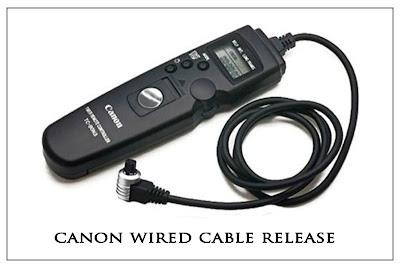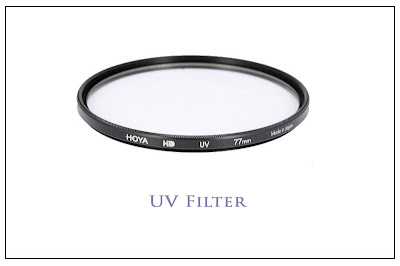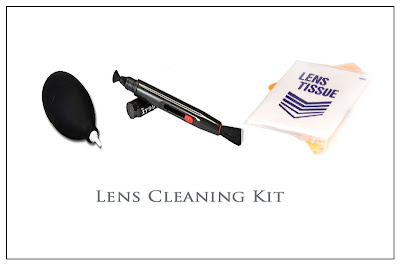There are wide range of accessories available for photography. Filters, Tripods, Bean Bags, Polarisers, Reflectors, Flash extenders etc to name a few. Some are just gimmicks while some others are real life savers.
While on a mission to shoot Nature, always remember two things above all, first one is that nature is very unpredictable and things can change from best to worst in a matter of seconds. So be prepared for it. Carry accessories that protect both you and your gear.
Second thing to remember is in order to get to the perfect location and vantage point you will have to walk, trek, climb, crawl… etc…etc… and that too a lot more than you have originally planned. The strain on you is directly proportional to the weight of your gear so choose your photographic accessories wisely. Only choose those that are indispensable and which complement the gear that you are carrying along.
We can group the accessories you need into three main categories.
Camera shake is the number one culprit when it comes to blurry images and tripods can help you eliminate this problem. Tripods minimize camera shake drastically and allows you to shoot at extremely slow shutter speeds. There are people who also advocate that using a tripod helps you compose better as it makes you think and plan your frame a bit more. However what you should be concerned about is unwanted blurs spoiling your shot and the safest way to avoid it is by using a tripod.Having said that, there is one little problem with using a tripod. A good stable tripod is usually heavy and bulky making it almost impossible to carry along on long treks. And even if you do by the end of the day you won’t feel like shooting due to tiredness. So what is the point? The solution to this is to use a carbon fibre tripod that is both sturdy and at the same time weighs much less.
While on a mission to shoot Nature, always remember two things above all, first one is that nature is very unpredictable and things can change from best to worst in a matter of seconds. So be prepared for it. Carry accessories that protect both you and your gear.
Second thing to remember is in order to get to the perfect location and vantage point you will have to walk, trek, climb, crawl… etc…etc… and that too a lot more than you have originally planned. The strain on you is directly proportional to the weight of your gear so choose your photographic accessories wisely. Only choose those that are indispensable and which complement the gear that you are carrying along.
We can group the accessories you need into three main categories.
Accessories that help you stabilize your shot
Tripod
Camera shake is the number one culprit when it comes to blurry images and tripods can help you eliminate this problem. Tripods minimize camera shake drastically and allows you to shoot at extremely slow shutter speeds. There are people who also advocate that using a tripod helps you compose better as it makes you think and plan your frame a bit more. However what you should be concerned about is unwanted blurs spoiling your shot and the safest way to avoid it is by using a tripod.Having said that, there is one little problem with using a tripod. A good stable tripod is usually heavy and bulky making it almost impossible to carry along on long treks. And even if you do by the end of the day you won’t feel like shooting due to tiredness. So what is the point? The solution to this is to use a carbon fibre tripod that is both sturdy and at the same time weighs much less.
 |
| Tripod |
Monopod
Even though monopods cannot compete with tripods when it comes to steadiness, (after all a monopod has only one leg while tripod has three) they are light weight, easy to carry, easy to re compose, easy to use when shooting in cramped situations and of course provide steadiness to a very useful degree. The main disadvantage of a monopod is that you cannot use it for extremely slow shutter speeds, but it is always better than hand held shots and also the ease of carrying means you will be less likely to leave it behind while on a trek when compared to a tripod.
 |
| Monopod |
Bean Bag
Bean bags are very effective to shoot from ground level. It has the advantage of being low cost and be fixed atop uneven surfaces. Just pat them down into shape and place your camera.
 |
| Bean Bag |
Cable Release / Wireless Trigger
A good cable release / wireless trigger mechanism is as essential to you as a tripod when shooting long exposures. The mere act of pressing the shutter release button could induce shake. The combination of a remote trigger and tripod goes a long way in eliminating camera shake.
 |
| Cable Release / Wireless Trigger |
Accessories that help you Control and Modify Light
Flash and Reflectors
Flash could be used to complement the existing light as a fill source, to highlight a certain element in the scene etc. The same could be done using reflectors. A combination of flashes, reflectors and colouring gels could come very handy in certain situations.
 |
| Flash and Reflectors |
Flash Extenders
Everybody knows that the small flash units we use have limited range. And in nature photography you will often find it inadequate. A flash extender is just a lens and some reflective material which is light, could be folded for easy storage and could be attached on to the flash unit quickly. Essentially what it does is to concentrate light from the flash on to a small area thereby extending its effective range allowing you to use it over long distances.
 |
| Flash Extenders |
Filters – Polarizing Filter, Neutral Density Filter, Graduated Filter etc
One of the most essential accessories for nature photography is filters, they come in all sizes and shapes and colours and performs a variety of jobs.Polarizing Filter
A polarizing filter is used to reduce reflections from some surfaces, and to darken the sky. A polariser filters out the polarized component of light from the sky, increasing contrast with the clouds. Plainly speaking it makes the dull sky appear deep blue.
 |
| Polarizing Filter |
Neutral Density Filter
Neutral Density Filter is a colourless (clear) or grey filter that reduces the amount of light passing through it. The filter reduces the intensity of all wavelengths of light across the spectrum equally so that there is no change in hue of colour rendition. This allows the photographer more flexibility to play with the aperture and shutter speeds. One example of an ND filters use is when you wish to take a picture with small depth of field in bright sun.
 |
| Neutral Density Filter |
Graduated Filter
A very useful accessory for Nature Photography. Graduated filter is commonly used to shoot a scene with extreme variations in lighting. Graduated filters have one half neutral density and the other half clear. The transition from ND to Clear could be either gradual or abrupt. It comes in all shapes and sizes to meet specific requirements of different situations.
 |
| Graduated Filter |
UV Filter
UV or Ultra Violet filter filters out the ultra violet rays from the light spectrum rendering a clean image to the sensor. Another advantage of using a UV filter on your lens is that whenever you shoot outdoors, dust accumulates on the lens. If a filter is used it accumulates on the filter instead and it is far easier and safer to clean a cheap uv filter than your expensive lens. It also protects your lens from scratches.
 |
| UV Filter |
Accessories to Protect your Gear
Camera Strap
While doing Nature Photography chances are than you end up moving a lot more than you expected on a trip and that makes you tired and sweaty. The combination is hazardous for your equipment coz tired hands tend to be shaky and sweaty hands are slippery. Your equipment may accidentally slip out of your hands. So use a camera strap so that you have a safety net even if something slips out of your hands. Using better padded straps instead of the company supplied ones will prevent straps from biting into your shoulder if you have to carry it for long periods. Also they give a feeling of reduced weight on your shoulders.
 |
| Camera Strap |
Camera Bag
Get yourselves a good camera bag, by good I mean a sturdy bag with padding to protect your equipment in case of shock. The bag should be compact, easy to carry around and should be able accommodate some essential accessories. If you are shooting wildlife choose a bag with a camouflage design.
 |
| Camera Bag |
Rain Protection Gear
Nature is very unpredictable, so even if you are getting out on a shoot sensing perfect weather, include some basic rain protection accessories to your gear. An umbrella with the underside silver and top portion black could have several uses. Providing black background for small subjects is one, being able to soften the flash by bouncing it on the inside is another. Protecting you from the hot sun and rain is just an added bonus. You may either buy rainproof covers for you camera or make yourselves one using a plastic bag and a hole for you lens to stick through. However these accessories are only good to get you to the nearest shelter and not intended for prolonged use if it starts pouring.
Dust Protection & Cleaning Tools
While doing Nature Photography you will find yourselves shooting in locations that are hot and dusty. In such situations it is important to protect your gear from the sun and from the dust. You may use a towel to cover up your gear when not in use. Also carry with you a bulb blower, lens pen / brush etc. A basic lens cleaning kit would be ideal and do clean your gear every day without fail. Use your blower sensibly if you are not using sealed equipment (most cameras except the professional range are not weather sealed) then you will end up blowing the dust to the inside of the camera.
 |
| Dust Protection & Cleaning Tools |
Miscellaneous Accessories
Background Material
In nature photography especially when photographing plants and flowers, the background of the picture becomes a major problem. They might have a cluttered background, uninteresting or untidy surroundings or at times simply distracting. Having some sort of background material, a piece of cloth, chart paper, cardboard etc will help you get the shot you want. You could use any material and colour you like. So it’s worth carrying some in your backpack.
Image Storage Devices
Well, a typical day out shooting means scores of images, most of which you would want to check twice on a larger screen before deleting. The end result is that you will end up filling up your cards like there is no tomorrow. So have some backup image storage devices at hand in shape of cards, external hard disks, laptop etc etc. so you do not have to think twice before pressing the shutter.
Power
Camera, Flash units, laptop, flash light, they all need a power source to replenish their batteries so make sure to bring spare batteries, chargers, mains adapters etc. having a car charger adapter or a solar panel charger / inverter that lets you charge your batteries will be very handy when you are out there in remote locations with no electric supply.
Compass and Map of local Area
Finding your way around unfamiliar territory is no easy job. So always carry a compass, either a dedicated one or ones that comes embedded in watches and other equipments. A map of the local area is also essential. If one is not available you could try printing one from google maps or google earth.
 |
| Compass and Map |
Utility Knife
There is a reason why a utility knife is included in the survival kit of all soldiers on active duty. Its uses are endless. You will never know when you’ll need one. So carry one always with you. You won’t need the fancy heavy duty stuff, just a simple, functional one will do.
 |
| Utility Knife |
Spot Light
A good spot light is a must when on a hike or when camping out. Not only does this thing help you during the night to locate creatures that are nocturnal and to find your way around; they could also be used during the day to light up small objects. Or if you remove the lens reflector it could be used to light up medium sized objects.
 |
| Spot Light |
A large Towel
Similar to the knife the uses of a large towel in field is endless it could be used to protect you or your gear from the hot sun or from dust, can wrap around your gear and run for the nearest shelter if it rains, you can spread it on the ground and lie on it either to rest or to shoot ground level shots, roll it up and it becomes a handy beanbag. When choosing a towel try to choose one with a camouflage design if available, if it’s not available then choose shades of dark green.
The list given above is not comprehensive. There are many more accessories for nature photography about which we will discuss in later articles. If there is something you really wish was there on the list do post it in the comments below.
Post a Comment